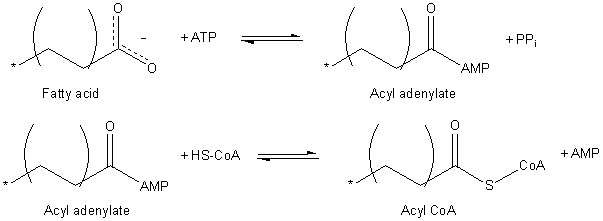Fatty Acid Breakdown:
Fatty acids are a very important adenosine triphosphate (ATP) and source of energy for several cellular organisms. Over fatty acids, glucose and other nutrients can be stored efficiently as fat. Triglycerides yield more than double as much energy for the similar mass as do proteins or carbohydrates. All cell membranes are established up of phospholipids, every of that holds two fatty acids. Fatty acids are also used for protein changes. The metabolism of fatty acids, thus, consists of catabolic processes which produce energy and primary metabolites from fatty acids, and anabolic processes which hold biologically important molecules from fatty acids and other dietary carbon sources.

Fatty acids contain a long hydrocarbon chain and a terminal carboxylate group. Several contain among 14 and 24 carbon atoms. The chains should be saturated or contain double bonds. The full oxidation of fatty acids yields about 9 kcal/g, that is over 2 times the energy which can be obtained from the similar weight of carbohydrate. Fatty acid catabolism is initiated when triacylglycerol (in adipose tissue) is hydrolyzed through lipases. Lipases are activated when high levels of cyclic AMP stimulate protein kinase A to phosphorylate the lipase. These reactions yield 3 fatty glycerol and acids. These fatty acids are then transported to tissues for oxidation.